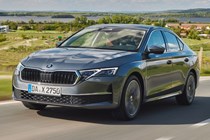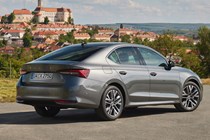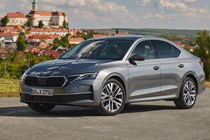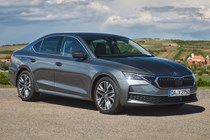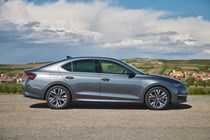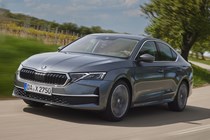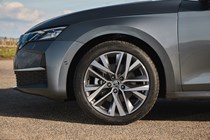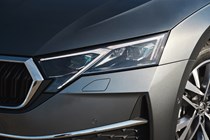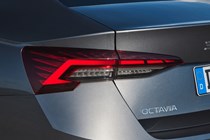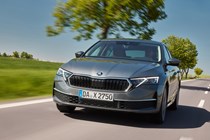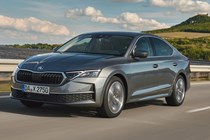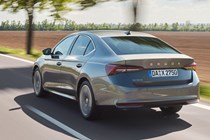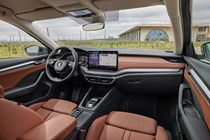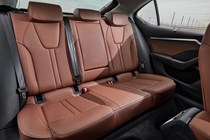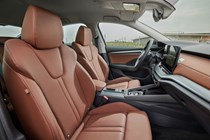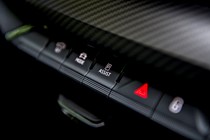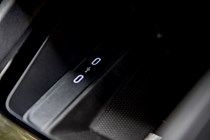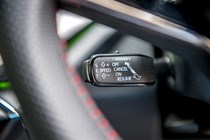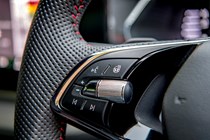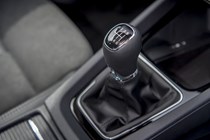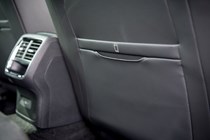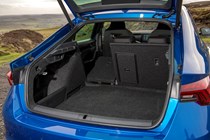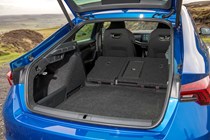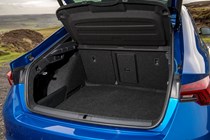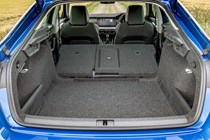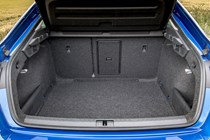
Skoda Octavia engines, drive and performance
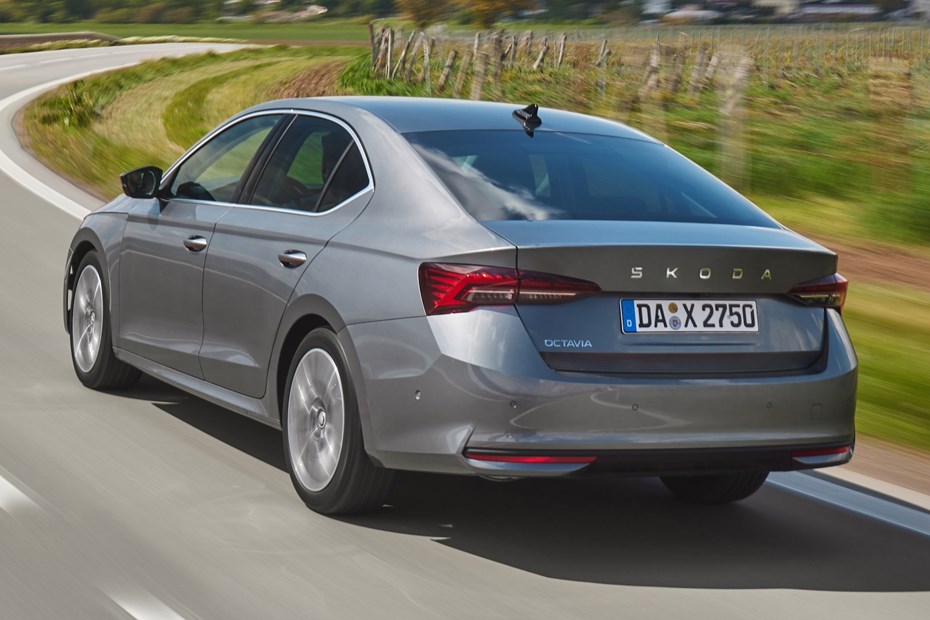
- Facelift engine range reduced
- Two petrol, two diesel with matched power outputs
- DSG automatic is worth having
The 2024 facelift has seen a reduction in the number of engines offered in the Skoda Octavia, as the small 1.0-litre petrols and the plug-in hybrid are currently not available – we’re expecting the latter to return, but probably not the former.
Even so, the four remaining conventional engines offer a reasonable selection for buyers, and we’ll cover the new 265hp Octavia vRS when it becomes available later in 2024.
Petrol engines
The remaining petrol engines are all based on 1.5-litre TSI turbo, offered with 116hp or 150hp and fitted with a six-speed manual gearbox as standard. These are typically the range bestsellers, with the entry-level low powered motor the most popular of all.
This is a little confounding to us, because it’s surely the least satisfying variant to drive – even the more powerful 1.5-litre manual suffers with some low-rev lethargy, and requires a lot of gearbox action to keep moving sweetly.
Given the choice – and the money – we’d not hesitate to upgrade to the 1.5-litre seven-speed DSG automatics as this also brings mild-hybrid technology…
Hybrid engines
So although Skoda counts the 1.5-litre DSG models as the automatic version of the regular 1.5, the engines are actually different enough to earn a separate e-Tec designation. This denotes the mild hybrid electric vehicle (MHEV) system that’s only available to DSG buyers.
MHEV tech replaces the conventional starter motor with a belt-driven starter-generator. This small electric motor not only delivers a super-smooth stop-start process and allows the engine to disconnect from the gearbox altogether when coasting at speed – both events helping to save more fuel – it also helps engine’s low-speed response.
Combined with the extra gear in the automatic transmission, this makes for a much keener feeling car. So although the 116hp version has a slower 0-62mph time than the manual on paper (the 150hp models are identical), in reality the e-Tec DSG models are much nicer to drive.
Diesel engines
It’s a similar story with the diesel engines. You can choose 116hp or 150hp, both based on a similar 2.0-litre TDI unit. However, the 116hp model is a six-speed manual only, while the 150hp version comes with the seven-speed DSG.
As a result, the former feels rather gutless and needs to be worked quite hard while the latter is a supreme long-distance cruiser that drivers who do a lot of motorway miles should seriously consider. This is easily capable of 50mpg plus, and with plenty of torque (pulling power) offers strong performance, too.
However, diesel Octavia sales are down to around 10% in the UK, so this is likely to be a rare choice.
What’s it like to drive?
- Body control and ride comfort are excellent
- Very consistent in its responses
- Sportline brings lowered suspension, sharper steering
Although it’s unlikely many people will buy a standard Octavia to throw around B-roads, it’s good to know that should you find yourself in this situation, it’s actually very willing. The facelifted model has a touch less steering assistance in an effort to improve the feeling of precision, but above all else this remains an easy to drive machine that’s still capable of satisfying.
“Skoda hasn’t gone down a sporty path for the Octavia’s ride and handling, and it’s all the better for it, offering excellent comfort.”
CJ Hubbard, Head of Automotive Hub
The key here – especially for the UK – is the supple suspension and carefully tuned damping. Even on 18-inch wheels the latest Octavia is able to soak up bumpy surfaces without feeling like the body is floating out of control, maintaining a taut authority to the suspension’s responses that makes the car seem smaller than it is, giving you the confidence to enjoy driving it more quickly, should you wish.
Variable dynamic chassis control suspension is available as an option, but we’ve never felt the need here – the regular fixed-damping set-up does a great all-round job. Sportline models are 15mm lower than the rest of the range and come with variable-ratio ‘progressive dynamic steering’ as standard if you’re after some extra sharpness. Just don’t expect a total transformation, as these remain unruffled over rippled tarmac and still roll a bit in the corners, too.
But since that adept cornering is really the sidekick to fine long-distance cruising comfort, which is where the Octavia really excels versus many of its rivals, we don’t mind a little extra lean around the bends. What’s more important from a driver satisfaction perspective is the linear and consistent nature of the Skoda’s responses, helping to make it both undemanding and trustworthy, regardless of how you drive.


